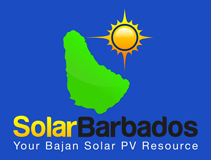
Solar Powered Mineirao Stadium
It’s that time again – a sudden uptick in “sick days”, longer lunch breaks and people leaving work early can mean only one thing – World Cup action is back!
This particular World Cup is special due to the role solar power is playing. You may have noticed during the matches an advertisement on the side panels of the field for Yingli Solar, the largest solar panel manufacturer in the world. They are the first renewable energy company to sponsor the FIFA World Cup. This not only shows that solar can compete with the big boys for sponsorship space, but it also increases the awareness of solar power via the world’s most watched sports event.

Even more significant is the fact that this World Cup is the greenest ever, almost entirely due to the solar PV installations on some of the stadium venues. Currently 3 stadiums (Arena Pernambuco, Mineirao Stadium, and Estadio do Maracana) have systems installed and an additional 2 venues will have solar installed later bringing the final total to 5.4MW.
Although these stadiums generate clean electricity, it shines a spotlight on the state of energy poverty in the world. When the National Stadium Mane Garrincha’s 2.5MW system is installed after the World Cup, it will produce more solar power than many of the competing nations. Those 11 countries are Bosnia-Herzegovina, Croatia, Cameroon, Colombia, Costa Rica, Ecuador, Honduras, Iran, Ivory Coast, Uruguay and Ghana. Barbados produces about 4MW of solar power thanks to various homeowners and businesses. By the next World Cup in 2018, I am certain the solar power generated by those 11 countries and Barbados will all increase.
In the same way Chile sent home defending champions Spain, solar is taking on the defending champions of conventional power generation.
